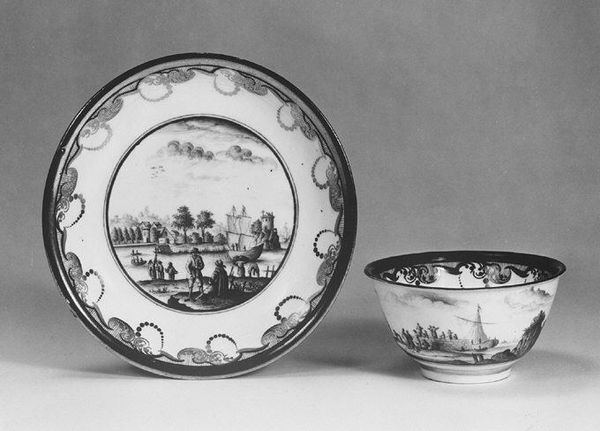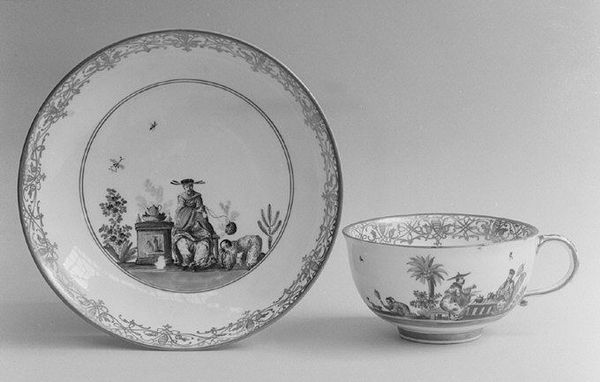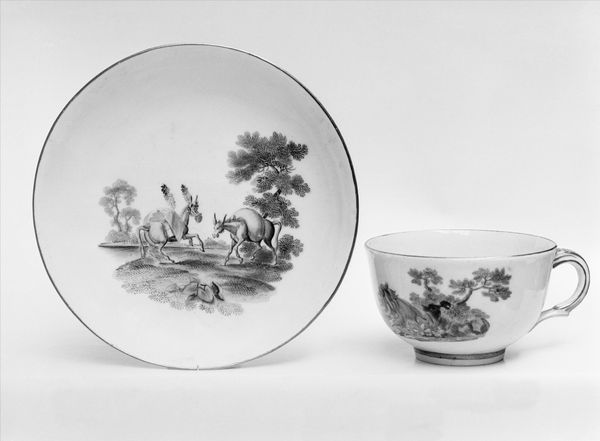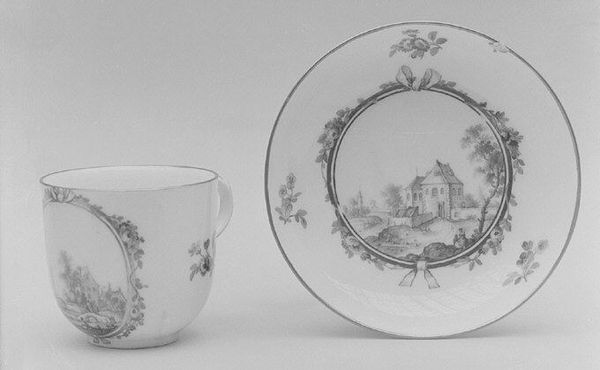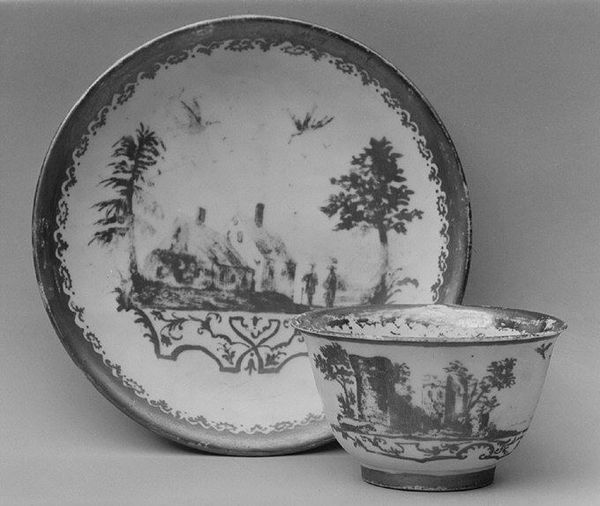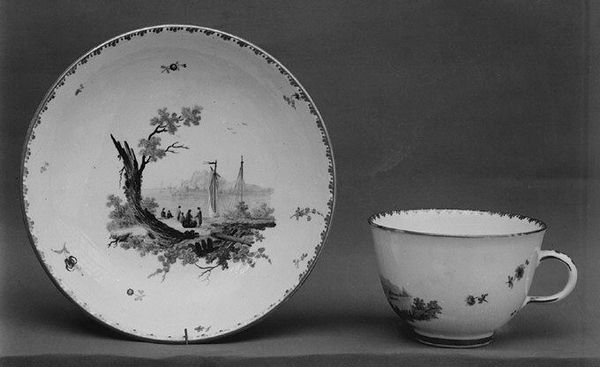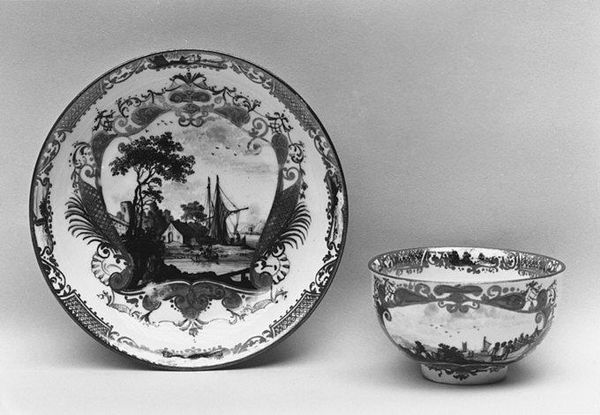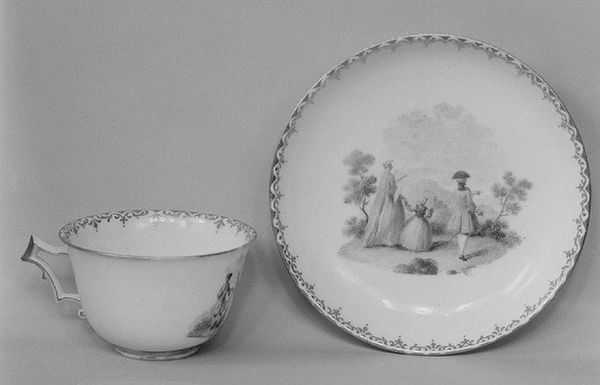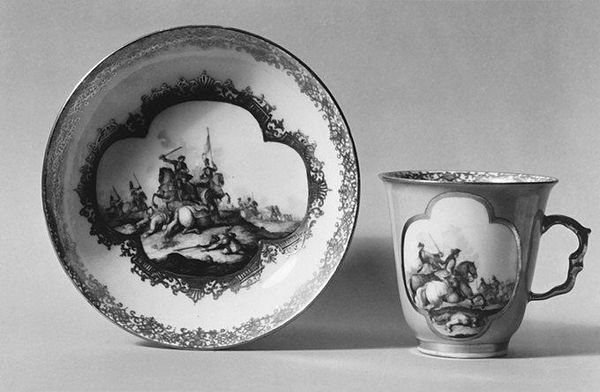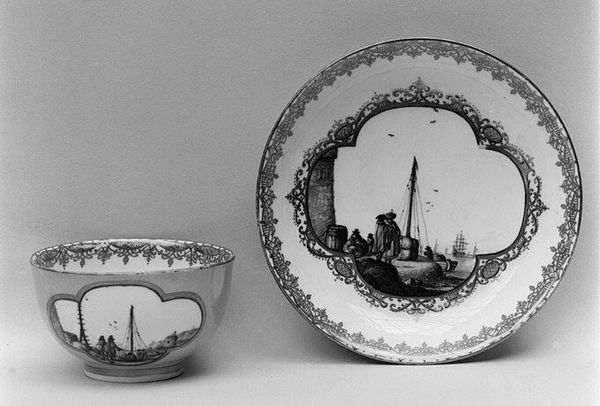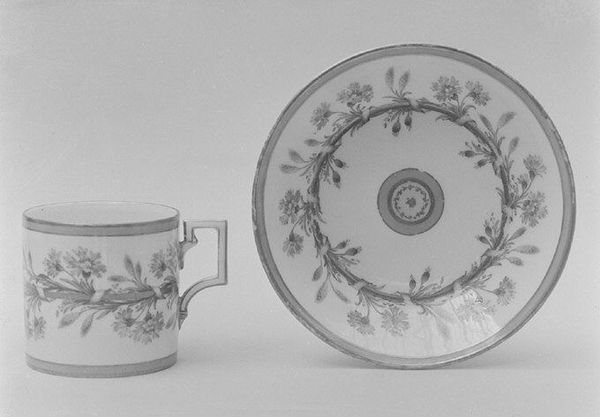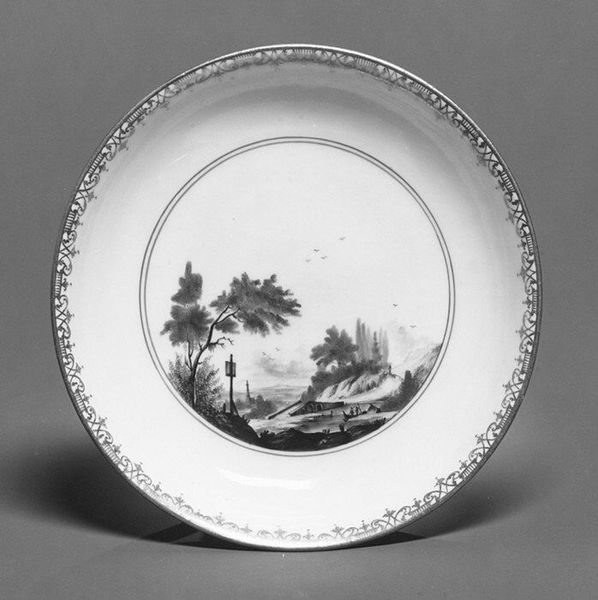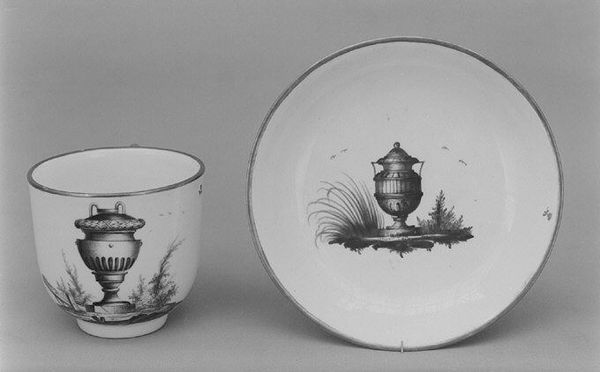
drawing, print, ceramic, porcelain
#
drawing
# print
#
landscape
#
ceramic
#
porcelain
#
ceramic
#
decorative-art
Dimensions: Overall (Teabowl): 1 7/8 × 2 5/8 in. (4.8 × 6.7 cm); Diameter (Saucer): 5 1/8 in. (13 cm)
Copyright: Public Domain
Curator: This teabowl and saucer, made of porcelain by the Loosdrecht manufactory between 1775 and 1789, immediately strikes me with its understated elegance. The monochromatic landscape scene wraps delicately around both pieces. Editor: My eye is drawn to how these utilitarian objects serve as a canvas, or a medium to disseminate class aesthetics and to celebrate land ownership at the time. Curator: Absolutely. The depicted scene, with figures elegantly posed against a romanticized backdrop, speaks volumes about the elite's perception and presentation of their world. This was a time of upheaval, where representation became very crucial. What roles were ascribed and ascribed to women? The landscape in the image tells a lot. Editor: Indeed. But let's consider the material itself: porcelain. It was highly prized, often imported at great expense, and its whiteness, its very purity, was a status symbol in and of itself. Moreover, these items were typically consumed within a tightly controlled household economy dependent on labor and raw materials extracted, sometimes violently, from colonial sources. Curator: And within these households, tea ceremonies were laden with significance. Serving ware like this could represent power, leisure, and access. Who was allowed to participate, to handle this precious ceramic, and in what way? Editor: And it speaks volumes about production, the hidden labour in producing objects of desire. Was it crafted locally or transported long distance across treacherous trade routes, changing its economic value, its social implications? We are viewing only the end result here. Curator: The idyllic scenes, though seemingly innocent, were intrinsically linked to social dynamics. Perhaps this reflects nostalgia? Porcelain production was changing quickly at that time, but this particular set reflects earlier values. Editor: Yes, a physical object, holding narratives much more profound, when we view objects in that era through a materialist and intersectional lens. A cup of tea? Perhaps a cup of resistance, a means of showing difference, reflecting a moment of history in every sip. Curator: It brings the domestic sphere and global forces into an intimate intersection. A humble teacup, not merely a vessel, but a potent signifier of social, political, and economic landscapes. Editor: Quite. Something so delicate, so carefully constructed, containing so much more than tea.
Comments
No comments
Be the first to comment and join the conversation on the ultimate creative platform.
